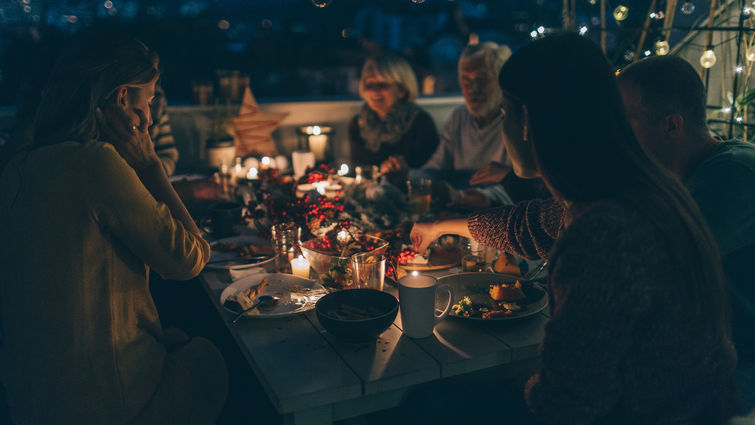
The Centers for Disease Control and Prevention recently released new recommendations for how to safely celebrate the holidays, and some key points include: get vaccinated, wear a mask if not vaccinated, and ventilate gathering spaces.
“The holidays can be such a special time for families, and many want to be together,” says Jennifer Veltman, MD, chief of infectious diseases at Loma Linda University Health. “But we don’t want to put our loved ones in danger when there are simple ways to protect everyone.”
Vaccines
Veltman says the CDC approving the COVID-19 vaccine for children ages 5-11 makes risk calculation much easier for families who choose to vaccinate their kids.
“For the first time, we may potentially be able to have family gatherings where everyone can be vaccinated against COVID-19,” Veltman says. “This is such a tremendous relief to many families and is for many the best gift this Christmas to not have to worry about harming those you love as you gather together.”
Veltman also recommends boosters for those eligible as an added layer of protection for grandparents, those with underlying medical conditions, or those who live or work in high-risk settings to protect against waning immunity.
Masking and Gatherings
The CDC recommends that those in “public indoor settings who are not fully vaccinated should wear a mask as well as those who are fully vaccinated but are in public indoor settings in communities with high transmission” rates.
If possible, ventilate your home where the gathering will occur, including opening windows and turning on fans. “Or if you have a mixture of vaccinated family and unvaccinated family and you want to skip some uncomfortable conversations or unsafe scenarios, take the gathering outside to keep everyone safer,” Veltman says.
Additionally, if you have an immunocompromised individual in your family, for example, someone undergoing chemotherapy, a transplant recipient, or someone with a rheumatologic condition, Veltman says to consider wearing a mask to provide an extra layer of protection for them as their weakened immune system may not be able to mount a full, protective response against COVID-19. “This is a small way we can protect our loved ones as we come together this holiday season,” she says.
Testing
Veltman wants to remind families that taking a test before a gathering to reduce risk further is an option. “If your family would like extra assurance or needs to be extra careful, testing is a good and quick option now,” she says. “Everyone can generally easily get tested by the county health department two days before the gathering and then do their best to quarantine themselves until the gathering.”
Veltman says COVID-19 cases rise after incidents of significant group activities such as holiday gatherings; however, vaccinations may continue to help. “Although we may have more cases of infection in the communities after the upcoming holidays, in the communities with high vaccination levels, my hope is that they will only be cases in the outpatient setting and not translate into surges in the hospitals,” she says.
For more information on the CDC’s guidance for safer holidays, visit their website.
